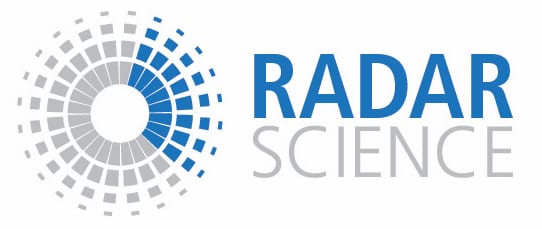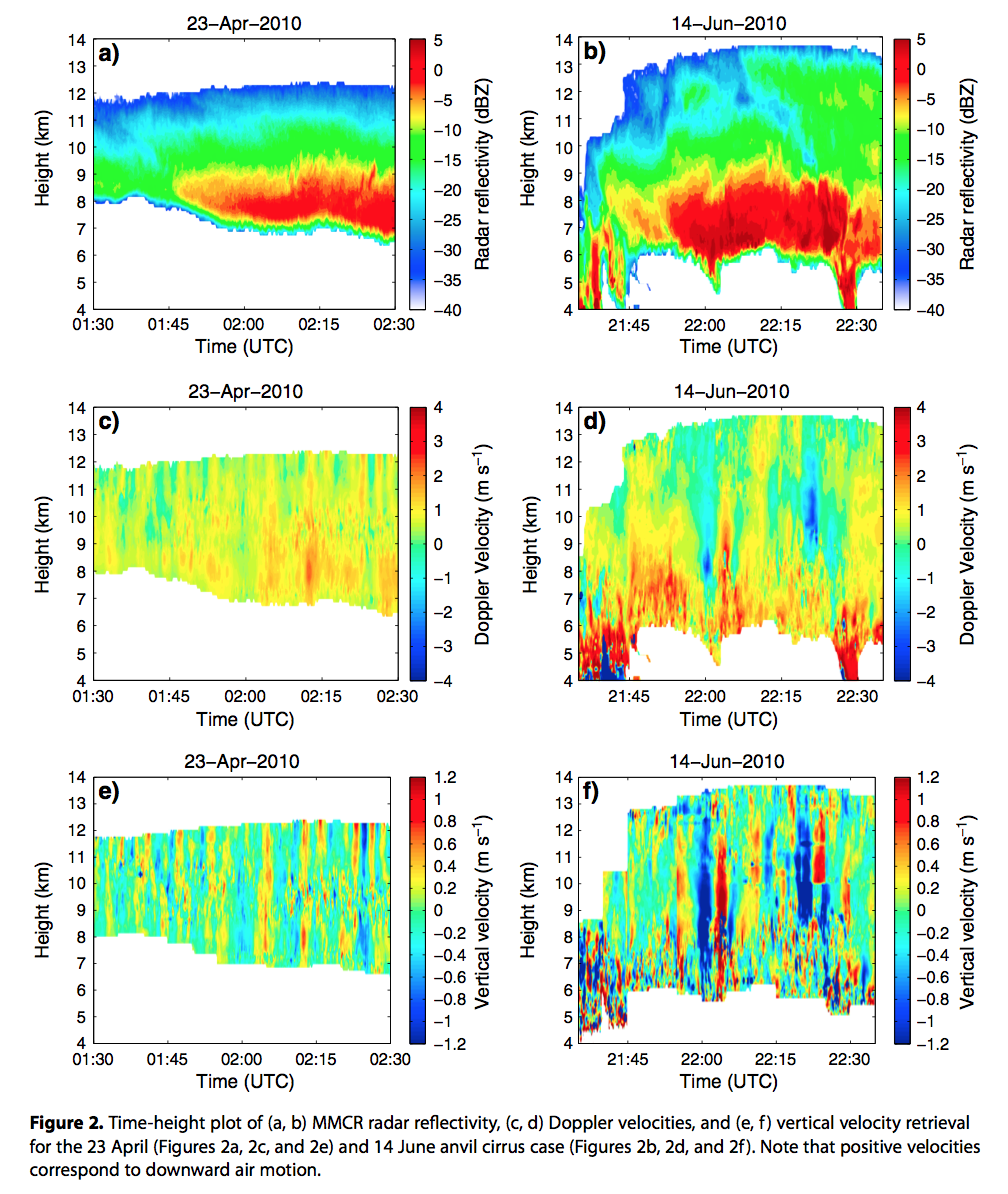Cirrus Turbulence
” Vertical velocities and turbulence in the upper troposphere are key elements affecting the microphysical properties and dynamical evolution of cirrus clouds. In particular, vertical velocities contribute to the cooling rates in the upper troposphere thereby affecting the values of ice supersaturations, the number concentrations of ice crystals formed by ice nucleation, and the growth rates of ice particles [e.g., Kärcher and Lohmann, 2002; Kärcher and Ström, 2003]. Adequate parameterizations of the microphysical properties of ice clouds in global climate models (GCMs) require knowledge of the subgrid-scale fluctuations of vertical velocities within a GCM grid box in order to better represent the physical properties and variability of cirrus clouds [e.g., Kärcher and Lohmann, 2002]. […][…] Novel retrieval algorithms are now being used to obtain continuous observations of vertical air motions within cirrus clouds from ground-based profiling Doppler cloud radar [e.g., Deng and Mace, 2006; Kalesse and Kollias, 2013] although individual efforts to obtain vertical velocities within cirrus from Doppler radar have been made much earlier [e.g., Heymsfield, 1975]. Due to their long record and continuous ongoing observations, these radar-based retrievals have the potential to provide an unprecedented amount of data for a wide range of conditions. […]
This paper presents a statistical comparison of observed vertical velocities in midlatitude cirrus from aircraft and ground-based Doppler cloud radar. The comparison is conducted for two cases of anvil cirrus observed simultaneously by aircraft and radar at the Southern Great Plains (SGP) site of the U.S. Department of Energy (DOE) Atmospheric Radiation Measurement (ARM) program. ”
Eddy Dissipation Rate and Coherent Structures
” […] Turbulence is one of the most important physical processes in the atmospheric boundary layer. Large eddies with a scale comparable with the boundary-layer depth can transport energy, water vapour, momentum and pollutants whereas small-scale turbulence can influence the cloud structure and cloud droplet growth (e.g., East and Marshall 1954; Jonas 1996; Wang and Grabowski 2009; Xue et al. 2008). Furthermore, turbulence and associated fluxes can affect supersaturation, mixing and entrainment and therefore are critical to the formation, maintenance and dissipation of stratocumulus clouds. Over land, the surface heating is an external forcing that can generate turbulence as well as the surface friction. In addition, in the cloud-topped boundary layer, cloud-top radiative cooling is another mechanism that can drive turbulence (Lilly 1968; Kollias and Albrecht 2000; Mechem et al. 2010). However, our knowledge of the turbulence structure and relative importance between surface heating and cloud-top cooling in the turbulence generation in continental stratocumulus clouds is still limited. The detailed analysis of boundary-layer cloud cases and associated turbulence can improve our understanding of not only the cloud dynamics but also cloud microphysical parameters, such as cloud-drop size distribution. This improved understanding can lead to an improved representation of stratocumulus clouds in numerical weather prediction and global climate models (Boutle and Abel 2012). […]
The potential of using the Doppler spectrum width to obtain ε has been noted for decades (Rogers and Tripp 1964; Brewster and Zrnic ́ 1986; Istok and Doviak 1986; Kollias et al. 2001), but Gossard et al. (1998) pointed out that many attempts to use the spectrum width from vertically pointed radars to estimate turbulence have not met with success because the calculation of ε from the Doppler spectrum width is subject to large uncertainties and careful analysis is needed. […]
The turbulence closure often involves the parametrization of a length scale (e.g. turbulence length scale, Zeman and Tennekes 1977; dissipation length scale, Stull 1988) that allows for a relationship between the resolvable scale velocity variance and ε. Estimates of these length scales in stratocumulus clouds from observations are limited. The ε values retrieved from the millimetre wavelength cloud-radar measured spectrum width not only provides an opportunity to calculate the vertical integral length scale but also provides an opportunity to examine its time variability. […]
Coherent eddies have been characterized in several previous radar studies of stratocumulus clouds (e.g., Ghate et al. 2010, 2011; Mechem et al. 2010a). These studies provide insight into the structure of elements that are explicitly resolved by large-eddy simulations (LES). In this study the characterization of large eddies is expanded to include the ε and radial velocity variance structure within updrafts and downdrafts.[…] ”




